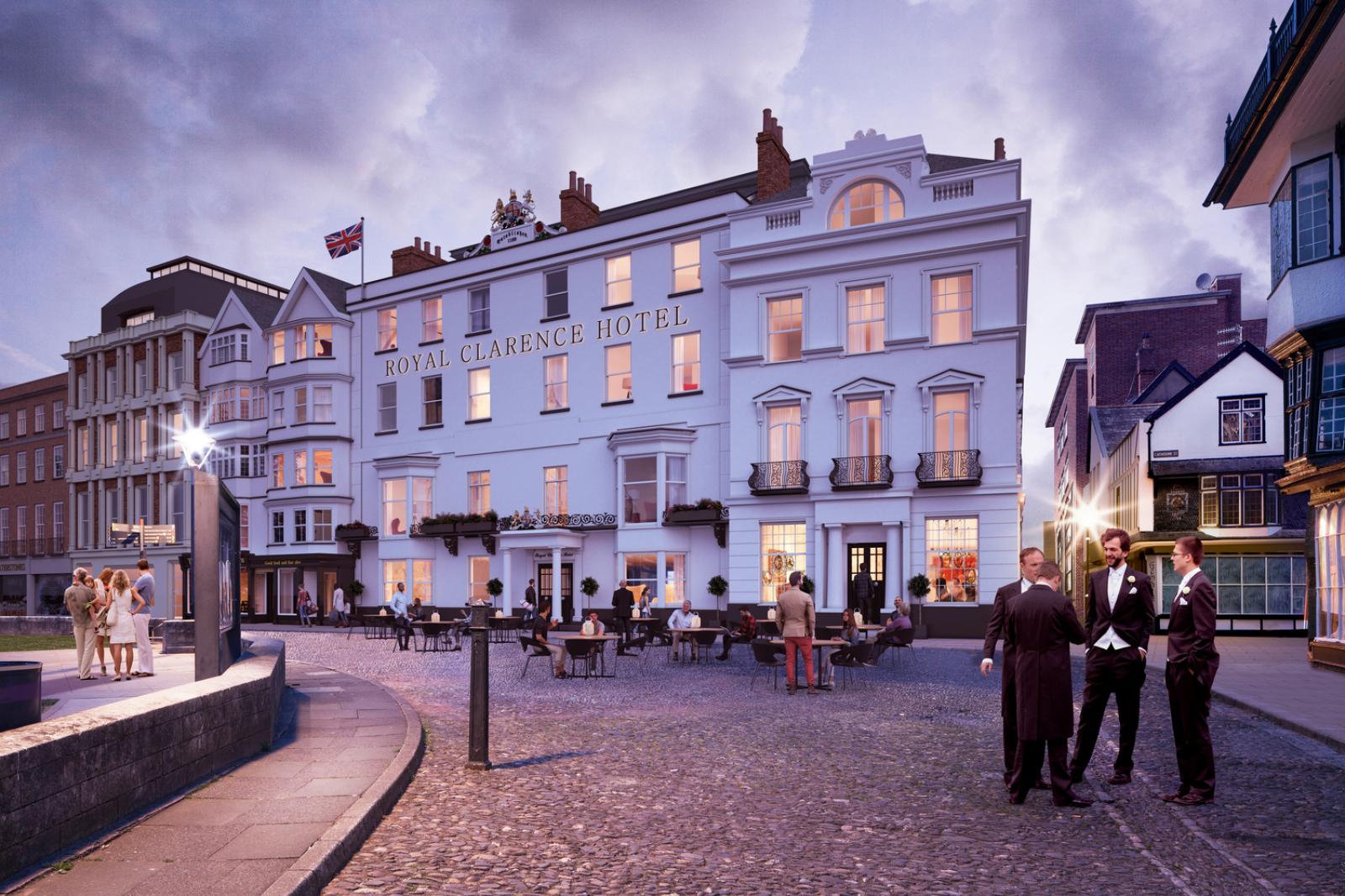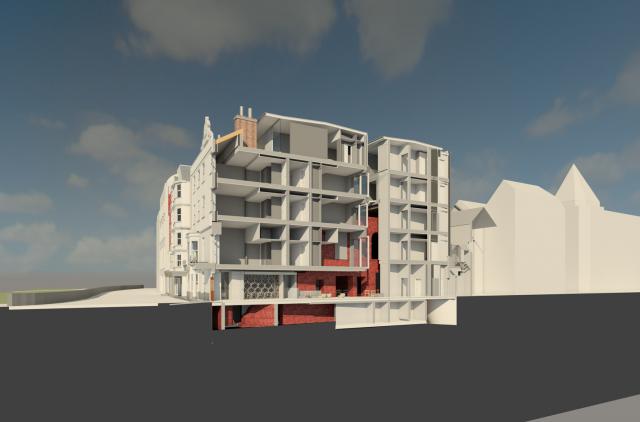Fire Damage
Heritage Consultancy
Interior Design

The Royal Clarence was a Grade II listed hotel in central Exeter, located opposite the Cathedral. The hotel was made up from five separate buildings historically, the Well House, two narrow buildings dating from the 17th century; The Royal Clarence, a Georgian four storey building; The Exeter Bank, a four storey 18th century former bank; Lamb Alley, and No.10 St Martins Lane.
In October 2016, the building was destroyed by fire, with only the building shell remaining.
We were appointed by project managers, Thomasons, to work with the owners, Brownsword Hotels, to restore and rebuild the hotel creating a building that the city could once again be proud of.
We had two distinct roles on the project firstly as conservation architects, assessing the damage, documenting the remaining structure and features, and through extensive research creating an in-depth report on the remaining significance of the building with recommendations for its repair and restoration.
Secondly, we were commissioned as architects to redesign the hotel. The proposals, informed by extensive consultation, see the building’s iconic frontage restored, with a new structure sitting behind it.


Wherever possible, surviving features of historic and architectural importance were incorporated into the design and new accommodation was designed to sit into the pattern and rhythm of the remaining historic building façades.
Fundamental to the design approach was the rationalisation of the circulation within the building. Prior to the fire, the Royal Clarence had complicated and confusing circulation patterns, developing organically as it had from separate historic buildings. Our concept introduced a new central atrium around to which clear circular routes were designed. The atrium also allowed natural light to the be brought to the centre of the deep plan building which vastly improved the internal environment and offer for guests.


The proposed circa 70 bedroomed hotel offered improved room sizes and quality in comparison to the original in line with the owner's aspiration to create a 5* hotel.
Alongside the bedrooms, the basement included a new spa area with treatment rooms and sauna / steam rooms. The ground floor includes new restaurant and bar which reinstates the separate Wellhouse Public House.
The restaurant was designed with two distinct areas - one a more informal tea room and the other a more formal dining space.
Finally, an extension has been added to the building. The new fourth floor houses suites which have private terraces which look out over the Cathedral. The suites are set back from the historic façades and are not visible from street level thus avoiding detraction from the like for like restoration of the historic front.
Heritage Consultancy
Following the fire, Buttress' Heritage Consultancy team produced a Conservation Plan for the building, which also incorporated a Statement of Significance. The findings of the report subsequently informed the design development process and was used to support planning and listed building consent applications.
This was followed by a Heritage Assessment which was submitted as part of the planning application. This document analysed the proposed designs and the impact of these designs on the surviving heritage as well as the suitability of the design within its context, and its spatial relationship with other exceptionally important buildings in the vicinity.
Image credits
dusk CGI by Ambiente
Martin Kirkpatrick
Martin is an experienced architect who has successfully delivered projects across a broad range of sectors, most recently specialising in hotels, multi-residential, mixed-use, and masterplanning work.
Tammy Welz
Tammy brings a passion for well-executed, beautiful and practical design to each project she is involved in, from hotel developments to city centre apartment schemes.
Prior to joining Buttress, Tammy spent three years in South Africa, where she worked for a practice that specialised in luxury family homes – an experience to which she credits her interest in the cultural and environmental influences on design outcomes.
Jenna Johnston
Jenna leads Buttress’ heritage consultancy team, providing clients with the resources and knowledge they need to better understand their heritage assets.


